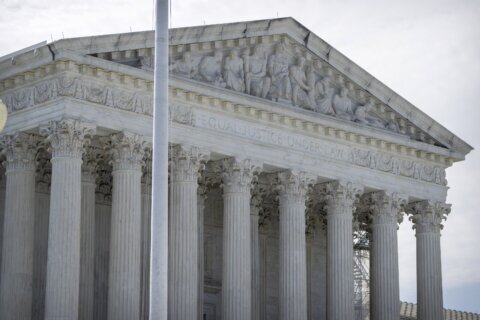One of the more common reasons for a visit or call to a doctor? Lower back pain. As the population ages, this complaint becomes even more frequent. Characterized by back, leg and neck pain, spinal stenosis affects more than 200,000 adults in the United States and an estimated 103 million people worldwide. In patients over age 65, it is the most common reason for spinal surgery and a significant cause of disability.
What Is Spinal Stenosis?
Spinal stenosis is characterized by narrowing of the spinal canal, which puts pressure on the nerves and blood vessels of the spine. While some people may not experience noticeable symptoms with spinal stenosis, reduced space in the spinal canal can cause significant muscle and nerve pain that can progress with age. Spinal stenosis can result in discomfort and a gradual loss in mobility. In more severe cases, it can cause bowel and bladder dysfunction.
[READ: 7 Best Yoga Poses for Strength Training.]
Types of spinal stenosis
There are three main types of spinal stenosis, categorized by where they present along the spine:
— Lumbar spinal stenosis occurs in the lower back and is the most common form of spinal stenosis. Pain or numbness resulting from lumbar stenosis can affect the lower back as well as the legs and buttocks.
— Cervical spinal stenosis occurs in the upper back and neck region and can cause pain or numbness in the neck, upper back, arms and hands
— Thoracic spinal stenosis is the least common form of spinal stenosis and occurs in the mid-back region, affecting both upper and lower body. It is relatively rare.
It is possible for a person to experience multiple types of spinal stenosis. This is called tandem spinal stenosis.
[SEE: Top Medications for Back Pain.]
What Causes Spinal Stenosis?
The spine is made up of many parts. There are 33 vertebrae — small bones that stack on top of each other — that form your spinal canal, which begins at the base of your skull in your neck and reaches all the way down to the tailbone. Between each vertebrae, spongy, water-filled cushions called discs protect the spine by acting as shock absorbers. Vertebrae are also connected by facet joints, which provide support and flexibility to the spine. All along the spine, there are ligaments and tendons that keep your spine aligned, protect it from injury and allow for stability.
Inside the spinal canal is the spinal cord, a column of nerve tissue that carries signals from the brain to the body and vice-versa. In spinal stenosis cases, the spinal canal is narrowed and interferes with normal spinal function.
Your spine experiences natural wear and tear as you age. Spinal stenosis is most commonly caused by these progressive, age-related changes.
The condition “is usually due to degenerative changes that occur in the spine, most often in adults over 60 years of age (and) often due to arthritis,” says Dr. Mary Ann Picone, neurologist and director of the Multiple Sclerosis Center at Holy Name Medical Center in Teaneck, New Jersey.
With age, vertebrae decrease in size, increasing the risk of torn or leaking discs, called bulging or herniated discs, that can lead to spinal stenosis. In addition, cartilage in discs and facet joints erode, which results in narrower joint spaces and bone spurs, both causes of spinal stenosis.
Most cases of spinal stenosis result from osteoarthritis, an inflammatory joint condition that causes joint stiffness and pain. It’s seen most often in older adults, though younger people can develop it too.
Causes of spinal stenosis include:
— Excess scar tissue following surgery, trauma, or infection
— Spinal injuries
— Herniated discs
— Diseases like Paget’s disease of bone or ankylosing spondylitis
— Obesity or being overweight
Spinal stenosis can also be congenital, meaning some people are born with the condition.
“Stenosis occurring prior to the age of 60 is usually due to an underlying, often congenital, structural deformity,” Picone points out. However, such instances are rare: According to the Cleveland Clinic, congenital spinal stenosis only accounts for about 9% of cases.
[Read: Meditation for Pain Relief.]
Spinal Stenosis Symptoms
Spinal stenosis symptoms can vary significantly based on progression and location. While it is possible for anatomical changes of spinal stenosis to be present for years without any pain, unfortunately, this is usually not the case.
In most people who develop symptoms as a result of spinal stenosis, symptoms begin gradually and depend primarily upon where on the spine the stenosis is taking place. Because symptoms progress over time, sometimes they can be hard to notice. But Picone says that she sometimes sees patients who first complain of back pain at a low intensity.
Across all types of spinal stenosis, common symptoms exist:
— Back pain, often in the lower back
— Pain radiating to the buttocks and legs, often described as burning, aching or cramping
— Numbness in the legs as well as numbness in the soles of the feet, which can lead to balance difficulties
— Weakness or cramping pain in the legs, thighs or feet
— Difficulty walking
— Pain that worsens with standing
— Bowel or bladder dysfunction
[Related:Easy Lower Back Stretches for Pain Relief]
Symptoms can also differ depending on what part of the spine is affected.
Lumbar spinal stenosis symptoms
For those with lumbar stenosis, the most commonly experienced symptoms include:
— Lower-back pain
— Cramping or burning pain in the thighs or buttocks
— Decreased reflexes
— Widened gait
— Decreased mobility
— Difficulty walking
— Numbness, tingling or weakness in the legs and/or feet
Standing, walking and activities that cause extension of the lumbar spine often make pain worse. Sitting, leaning forward and laying down can help lessen the pain for those with lumbar spinal stenosis. People with lumbar spinal stenosis usually walk with a stooped posture to help relieve pain.
Picone has used the phrase “shopping cart sign” to describe the forward bending and leaning over as if someone were holding onto a shopping cart.
Additionally, sitting for a long period of time and suddenly getting up, sudden movements like the twist of the back during a golf swing and bending over can all cause an increase in pain. Decreased mobility results in some patients avoiding walking altogether, causing a snowball effect on overall health as excess weight increases and puts added stress on the lumbar spine.
Pressure on the nerves in the lumbar region can also lead to cauda equina syndrome, which is extreme compression of the nerves at the end of the spinal cord. Cauda equina syndrome causes loss of bowel and bladder control, retention of urine and numbness or weakness in the buttocks, genital and rectal areas and requires immediate medical attention, often through surgical treatment.
Cervical spinal stenosis symptoms
Those with cervical stenosis often experience:
— Neck pain
— Pain radiating into the arms (radiculopathy)
— Loss of mobility
— Difficulty balancing
— Bladder or bowel dysfunction and weakness
— Numbness and/or tingling in the arms, hand or fingers
Compared to lumbar stenosis, there is greater risk of spinal cord compression with cervical stenosis since the spinal cord cannot move as freely as in the cervical canal.
Thoracic spinal stenosis symptoms
Thoracic spinal stenosis is rare, but its common symptoms include:
— Weakness or numbness in both the upper and lower body
— Pain in the ribs/trunk
— Decreased mobility in the torso
— Impaired balance
— Weakness or numbness in one or both legs
— Pain in the mid-back that can radiate to the lower back and legs
— Bowel or bladder dysfunction
— Impaired range of motion and difficulty walking or foot drop — trouble raising the front of the foot when walking
How Is Spinal Stenosis Diagnosed?
Spinal stenosis can sometimes be hard to diagnose.
Diagnosis is based on a combination of clinical signs from the patient’s history, physical examination and radiological studies. Magnetic resonance imaging (MRI) is helpful in confirming the diagnosis, assessing the number of levels involved and ruling out any tumor or infection. It is the testing of choice to see discs, muscle, nerve roots, ligaments and cartilage and is useful for planning needed for surgical intervention. When an MRI is unavailable, CT scans are recommended. Additionally, electromyography and nerve conduction studies can be helpful in determining whether there is damage to the nerve root exiting the spinal canal.
“What can make diagnosis difficult is that symptoms vary from person to person and depending on the degree of impairment patients may or may not seek medical attention,” explains Picone. Diagnosis is the first step to developing a plan of action to assessing and treating the uncomfortable and sometimes debilitating effects of spinal stenosis.
Best Treatments for Spinal Stenosis
While there is no cure for spinal stenosis, in most cases, non-surgical treatment can provide relief and help improve function. The goal is to decrease pain, improve quality of life and daily function and prevent further decline.
Usually, a combination of therapies works best:
— Anti-inflammatory therapies, either topical or oral, such as non-steroidal anti-inflammatory medications can help in reducing inflammation along a spinal nerve which in turn can relieve pain.
— Muscle relaxants, antidepressant medications and antiseizure medications that reduce back pain can also be used.
— Physical therapy, stretching exercises and abdominal core strengthening can help mitigate symptoms by improving spine strength, flexibility and mobility. A combination of aerobic, strengthening and flexibility exercises are best.
— Balance training, postural instruction and stabilization exercises can help improve symptoms, mobility and alignment while also reducing chances of falls or accidents and strengthening the muscles supporting the spine.
— For pain relief, treatments like heat, ice, electrical stimulation, ultrasound therapy and over-the-counter anti-inflammatory medications like ibuprofen can be used.
— Epidural steroid injections under ultrasound or fluoroscopic guidance are relatively safe and can help in decreasing swelling and pain. They can provide short-term relief and may help for a few weeks but are unlikely to be effective after six weeks or more. Side effects include risk of infection or nerve injury.
— Maintaining a healthy weight can help decrease stress placed on the lumbar region.
— Prescription foot orthotics can improve foot function and balance.
— Aqua therapy is also found to provide relief for spinal stenosis, increasing lumbar flexion, blood flow and overall mobility while reducing the amount of stress placed on the spine.
Surgery for Spinal Stenosis
Surgery is often recommended for cases of severe pain and worsening neurologic deficit. Surgical treatment is directed towards relieving radicular pain — pain radiating into the legs — or pain with walking as it can be a successful strategy to restore mobility in those who are unable to walk due to spinal stenosis.
However, most patients who have isolated lower back pain without neurologic symptoms are best managed non-surgically. In severe cases where patients experience bladder and bowel dysfunction as well as motor weakness, surgical intervention to address compression and/or discs herniation is often necessary.
Most common types of surgery for spinal stenosis:
— Lumbar decompression — also called a lumbar laminectomy — is the most frequently performed surgical treatment for patients with spinal stenosis. In this procedure, discs and/or bone are moved away from the compressed nerve root or roots to create space. A lumbar laminectomy enlarges your spinal canal to relieve pressure on the spinal cord or nerves, and has about an 80% success rate at improving walking abilities. Recovery time varies depending on each individual procedure, and procedures may be inpatient or outpatient depending on each patient’s situation. If lumbar decompression was performed in conjunction with spinal fusion, recovery may take up to six months. For cases of cervical spinal stenosis, cervical laminectomies also exist.
— Minimally invasive lumbar laminectomies and partial laminectomies — called a laminotomy — are also becoming increasingly more available and have quicker recovery times compared to traditional lumbar laminectomies. Recovery from a minimally invasive laminectomy may be four to six weeks.
— A procedure called a foraminotomy can be used to increase space for nerve roots to exit the spinal canal and relieve pressure. The procedure can be performed as an inpatient or outpatient procedure depending on the patient’s circumstances, and recovery times range but patients typically experience improvement and recovery between six and 12 weeks.
— In cases where a bulging disc is pressing on spinal nerves, a discectomy may also be carried out to relieve pressure by partially or fully removing a damaged disc. The procedure can be inpatient or outpatient according to each patient’s needs and recovery time varies depending on the severity of damage.
— A procedure called a laminoplasty is also available for cervical stenosis cases, where more space is created in the spinal canal by removing only a portion of a part of the vertebrae called the lamina. Patients may begin to see improvement after a few weeks.
If bony degeneration has progressed to the point of instability of the spine, then stabilization by spinal fusion is needed. This surgery connects two more bones in the spine, fusing adjacent vertebrae to prevent motion. In cases also featuring scoliosis or spondylolisthesis — where one vertebra slips forward out of place onto the bone below it — fusion is often needed.
Implantable devices can also be an option for spinal stenosis patients. In this procedure, surgeons insert a device into the back of the spine to prevent a patient from bending too far backward at the narrowed segment of the spine. Altering this position can reduce leg pain and numbness. Although these implants have been around for a decade, many surgeons consider them to be experimental and are waiting to use them until they have long-term data on their effectiveness
If there are also other medical issues involved such as diabetes, heart disease or kidney disease, recovery can be impaired. The presence of other medical issues requires a discussion with your doctor prior to surgery. Additionally, age itself does not limit the possibility of surgery, but overall health must be considered in determining risk — the better overall condition someone is in prior to surgery the better the result often obtained.
How to Prevent Spinal Stenosis?
Although spinal stenosis results from wear and tear in the spine as a natural result of aging, there are certain lifestyle changes that can help slow the development and progression of spinal stenosis:
— Maintain a healthy weight: Excess body weight increases the stress put on the spine and can worsen narrowing, so keeping a healthy weight can reduce risk of developing stenosis or improve existing symptoms.
— Improve posture: Poor posture can also contribute to spinal degeneration. Maintaining a good posture helps with spinal alignment. Proper foot and ankle posture is also key in preventing spinal stenosis: A high arch or low arch affects posture, which affects the lower back, balance and coordination and can ultimately increase your risk of developing spinal stenosis or worsen the progression of existing spinal stenosis. Custom foot orthotics can be used to improve foot posture and overall alignment by preventing foot pronation, which often occurs as the body ages.
— Core-strengthening exercises: Exercises that engage the core like planks or crunches can strengthen the muscles that support the spine, helping to prevent spinal stenosis. Low-intensity stretching exercises and yoga can help improve symptoms and prevent development.
— Avoid high-impact sports: High-impact sports like football or golf can involve twisting movements of the spine, which can cause damage or worsen symptoms.
— Stop smoking: Smoking can damage the arteries that supply blood to the spine, increasing the risk of spinal stenosis. Quitting smoking can help prevent spinal stenosis and can also reduce pain from existing stenosis.
— Maintain a balanced diet: Eating a healthy diet rich in colorful fruits and vegetables can provide your body the nutrients it will continue to need for strong, healthy bones.
The trouble with degenerative spine conditions is that they rarely happen overnight, and many people just learn to adapt and “live with them.” Don’t. Don’t settle for being in pain or for a less-than-active lifestyle. Do what you can now to avoid these conditions, and if you’re experiencing any type of pain, see a doctor to get to the bottom of what’s causing it and what treatments are available.
More from U.S. News
Best Products for Summer Health Hazards
Can Eating Certain Foods Help You Tan?
What Is Spinal Stenosis? Causes, Symptoms, Treatments and Prevention originally appeared on usnews.com







